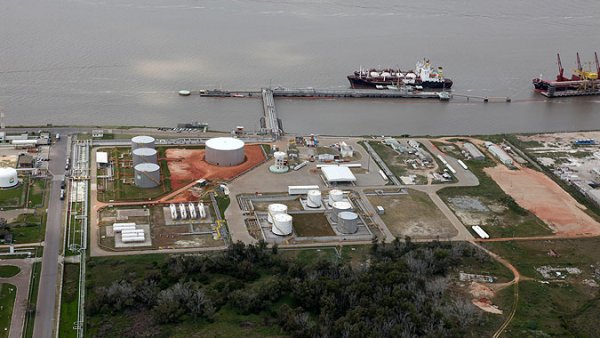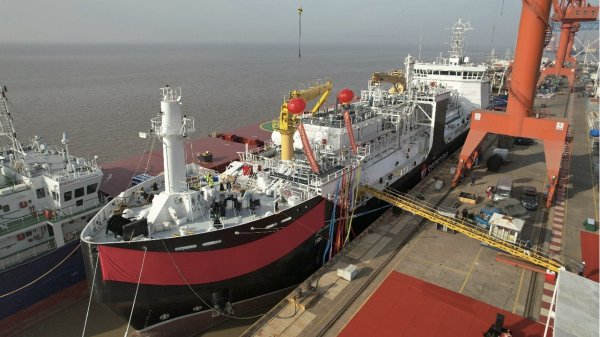Study reveals effect of ships on ground-level ozone
Shipping may be responsible for over 25% of the ground-level ozone in a number of coastal areas, says report.
New research claims to show that emissions generated by ships increase acid rain on shore and may be responsible for over 25 percent of the ground-level ozone in a number of coastal areas. The research results were recently published in the journal Atmospheric Chemistry and Physics.
Past studies have shown that 70 percent of shipping occurs within 400 kilometres of land. Taking this research further, Professor Stig B. Dalsøren, from the Centre for International Climate and Environmental Research at the University of Oslo in Norway, and his team, investigated the amount of pollution generated by ships and located the affected sites. The researchers evaluated data that was collected globally in 2004.
According to Professor Dalsøren, in 2004 the global merchant fleet comprised more than 90 000 ships. The researchers split the ships into 15 categories in order to compute the pollution they emitted. Each category was subdivided into seven weight ranges. The team then estimated the emissions they believed would be generated whilst the ship was at sea or in port.
Information about the routes sailed by more than 30 000 ships during that period was used by the researchers to establish the location of the generated emissions. 'The ships burned around 217 million metric tonnes of fuel in 2004 and 5 percent of this was consumed while in port,' Professor Dalsøren explained.
The study says the majority of the fuel burnt was 'sulphur-rich', leading to emissions containing over 16 million tonnes of sulphur dioxide. 'That gas, plus the various nitrogen oxides (NOx), gases in the engine exhaust, reacts with moisture in the air to produce acid rain,' Dalsøren said.
On a global scale, the team calculated that ships are responsible for more than 10 percent of acid rain due to NOx emissions, and almost 5 percent of acid rain due to sulphur dioxide emissions.
According to the data, around 15 percent of the sulphur dioxide in the air at the port of Singapore is generated by ships. Just as interesting is the fact that a number of coastal areas (e.g. the Nordic region) that lack industrial activity but that have ships passing close by, report that almost 50 percent of the acid rain is potentially caused by ship emissions.
Professor Dalsøren remarked that ships are also responsible for the substantial amounts of ground-level ozone, triggered when the sun stimulates chemical reactions in emissions-rich air. The 5-15 percent ground-level ozone reported in some parts of western Europe are sparked by ship emissions, he added.
Dr David Stevenson from the University of Edinburgh said the new findings demonstrate 'the important influence of ship emissions on air quality in busy ports'.
For his part, Professor James Corbett from the University of Delaware said: 'What's really cool about this study is that the results are converging with data now being compiled by the International Maritime Organization (IMO), which is responsible for improving maritime safety and preventing pollution from ships.'
Professor Corbett added that these latest research results will help scientists and policymakers estimate the effects of proposed regulations on the different kinds of ships more effectively.
Past studies have shown that 70 percent of shipping occurs within 400 kilometres of land. Taking this research further, Professor Stig B. Dalsøren, from the Centre for International Climate and Environmental Research at the University of Oslo in Norway, and his team, investigated the amount of pollution generated by ships and located the affected sites. The researchers evaluated data that was collected globally in 2004.
According to Professor Dalsøren, in 2004 the global merchant fleet comprised more than 90 000 ships. The researchers split the ships into 15 categories in order to compute the pollution they emitted. Each category was subdivided into seven weight ranges. The team then estimated the emissions they believed would be generated whilst the ship was at sea or in port.
Information about the routes sailed by more than 30 000 ships during that period was used by the researchers to establish the location of the generated emissions. 'The ships burned around 217 million metric tonnes of fuel in 2004 and 5 percent of this was consumed while in port,' Professor Dalsøren explained.
The study says the majority of the fuel burnt was 'sulphur-rich', leading to emissions containing over 16 million tonnes of sulphur dioxide. 'That gas, plus the various nitrogen oxides (NOx), gases in the engine exhaust, reacts with moisture in the air to produce acid rain,' Dalsøren said.
On a global scale, the team calculated that ships are responsible for more than 10 percent of acid rain due to NOx emissions, and almost 5 percent of acid rain due to sulphur dioxide emissions.
According to the data, around 15 percent of the sulphur dioxide in the air at the port of Singapore is generated by ships. Just as interesting is the fact that a number of coastal areas (e.g. the Nordic region) that lack industrial activity but that have ships passing close by, report that almost 50 percent of the acid rain is potentially caused by ship emissions.
Professor Dalsøren remarked that ships are also responsible for the substantial amounts of ground-level ozone, triggered when the sun stimulates chemical reactions in emissions-rich air. The 5-15 percent ground-level ozone reported in some parts of western Europe are sparked by ship emissions, he added.
Dr David Stevenson from the University of Edinburgh said the new findings demonstrate 'the important influence of ship emissions on air quality in busy ports'.
For his part, Professor James Corbett from the University of Delaware said: 'What's really cool about this study is that the results are converging with data now being compiled by the International Maritime Organization (IMO), which is responsible for improving maritime safety and preventing pollution from ships.'
Professor Corbett added that these latest research results will help scientists and policymakers estimate the effects of proposed regulations on the different kinds of ships more effectively.

|
IMO approves pricing mechanism based on GHG intensity thresholds
Charges to be levied on ships that do not meet yearly GHG fuel intensity reduction targets. |
|
|
|
||

|
VARO Energy expands renewable portfolio with Preem acquisition
All-cash transaction expected to complete in the latter half of 2025. |
|
|
|
||

|
NYK trials biofuel in milestone coal carrier test
Vessel is used to test biofuel for domestic utility company. |
|
|
|
||

|
H-Line Shipping orders LNG bunkering vessel
Vessel with 18,000-cbm capacity to run on both LNG and MDO. |
|
|
|
||

|
How to engineer and manage green shipping fuels | Stanley George, VPS
Effective management strategies and insights for evolving fuel use. |
|
|
|
||

|
Swedish government bans scrubber wastewater discharges
Discharges from open-loop scrubbers to be prohibited in Swedish waters from July 2025. |
|
|
|
||

|
MAN Energy Solutions achieves 100% load milestone for ammonia engine
Latest tests validate fuel injection system throughout the entire load curve. |
|
|
|
||

|
Petrobras secures ISCC EU RED certification for B24 biofuel blend at Rio Grande
Blend consisting of 24% FAME is said to have been rigorously tested to meet international standards. |
|
|
|
||

|
Stolt-Nielsen to fully control Avenir LNG with acquisition
Share purchase agreement to buy all shares from Golar LNG and Aequitas. |
|
|
|
||

|
Bureau Veritas supports launch of CIMC SOE's LNG bunkering vessel
Handover of Seaspan Energy's cutting-edge 7,600-cbm vessel completed. |
|
|
|
||
Related Links
- · US ECA report is released [Insights]
- · Report documents U.S. ship emissions [Insights]
- · Study: More soot from tugs than any other vessel [Insights]
- · Study: Cleaner fuels have zero GHG impact [Insights]

